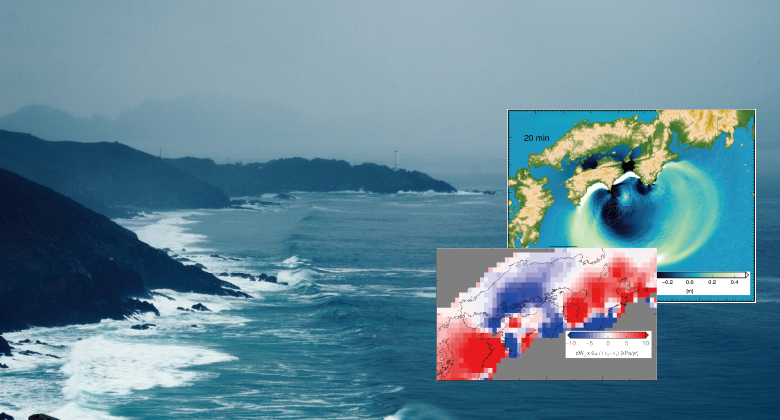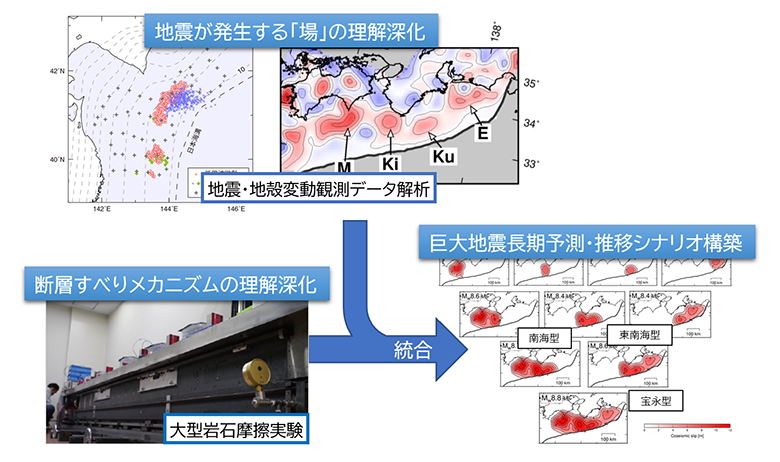Research and development for comprehensive understanding of earthquake generation and forecasting
Aim to enhance earthquake forecasting by comprehensively understanding its generation mechanisms through integrating experiment, observation, and theory

Based on historical documents, geological surveys, and seismological and geodetic observations, some progress has been made in the long-term evaluation of large earthquake occurrence in the future. While we cannot know with certainty when and where a major earthquake will occur, more precise images of future large earthquakes are essential. Furthermore, the image of the large earthquakes that we should prepare for in the future, such as the Nankai Trough Earthquake, remains vague. In order to overcome this situation and mitigate earthquake disasters, it is necessary to deepen our understanding of the mechanisms causing mega earthquakes, develop better methods to evaluate earthquake occurrence based on this knowledge, and provide more concrete image of the large earthquakes that may occur in the future. Through this research project, we will advance our understanding of the various characteristics of places where earthquakes occur and conduct research to create scenarios for the occurrence and transition of major earthquakes by integrating these outcomes.
What mechanical conditions can generate earthquakes? How do faults slip?
Earthquakes occur due to slip on faults underground. In order to improve our understanding of the forces applied to faults or the stress field in the seismogenic zone, we will develop methods to analyze seismological and geodetic data and construct earthquake generation models that explain the analysis results.
Furthermore, by conducting rock friction experiments in the experimental facility, we investigate the frictional properties of rocks that govern fault slip and research to understand the physical mechanisms of earthquake occurrence better. The rock friction experiment we conduct is very unique in that we use much larger rock samples than those used in conventional rock friction experiments. Through this experiment, we have discovered a number of important properties, including that the nature of rock friction depends on the size of the fault. In this fiscal year, we will begin full-scale operation of our newly developed on of the world’s largest rock friction testing apparatus. By conducting experiments with a size closer to that of natural faults, it is hoped that this will lead to a better understanding of how real faults slip.
What king of large earthquakes are likely to occur in the future?
In order to better assess the occurrence of future large earthquakes so that the “unexpected” doesn’t arise, it is necessary to develop methods that can explain how large earthquakes occur using a theory based on mechanics in addition to empirical approaches.
NIED has created and proposed 10 scenarios for the occurrence of earthquakes in the Nankai Trough area, based on the law of friction that govern the way in which faults slip and the amount of accumulated “strain energy”, which is the driving force behind fault rupture. These scenarios include types similar to the Nankai Trough megathrust earthquakes that have occurred in the past, as well as types that have not been confirmed to have occurred in the past.
Using knowledge derived from rock friction experiments and field observation data analysis, we will develop advanced methods to create earthquake rupture scenarios, including the cases for consecutive earthquake sequences.

